Sustainability policy
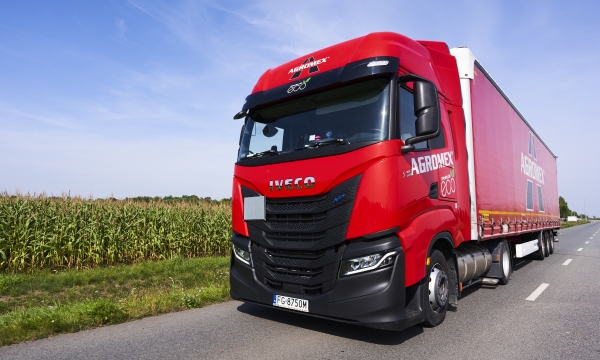
Sustainability policy
In 1987, the WCED (World Commission on Environment and Development) prepared a report entitled “Our common future.” The main thesis of the report is that the needs of the present generation can be met without compromising the opportunities of future generations to meet them. The mentioned report introduced the concept of “sustainable development”. Actions consistent with this approach are beneficial both for the environment and society, but also for the company that has decided to implement a sustainable development policy.
Our company, acting in accordance with the idea of sustainable development, has implemented numerous solutions aimed at reducing the negative impact of our work on the environment.
Zero-emission fuel - bio-LNG
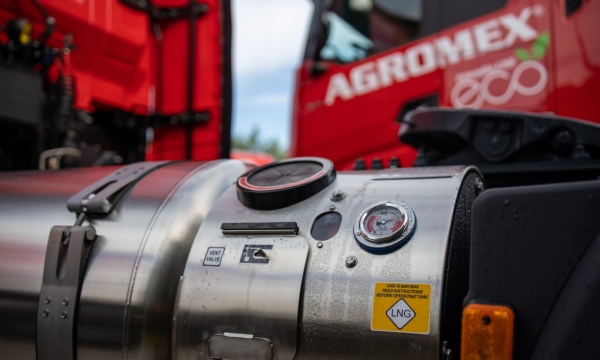
Zero-emission fuel - bio-LNG
Our vehicles are powered by zero-emission fuel – bio-LNG.
Bio-LNG is an alternative fuel to diesel and standard LNG.
Standard LNG (Liquid Natural Gas) is a fossil fuel, a mixture of light hydrocarbons, consisting mainly of methane (95%), which, to put it simply, is cooled to a temperature of at least -120oC after extraction and liquefied.
Bio-LNG, in turn, is a fuel that is produced as a result of microbiological decomposition of various types of organic waste, including agricultural, municipal and industrial waste. In the process of anaerobic fermentation of processed waste, biogas is released, the main components of which are methane (CH4) and carbon dioxide (CO2). The methane is then separated and, in a complicated process, cooled and liquefied, which increases the energy density 600 times.
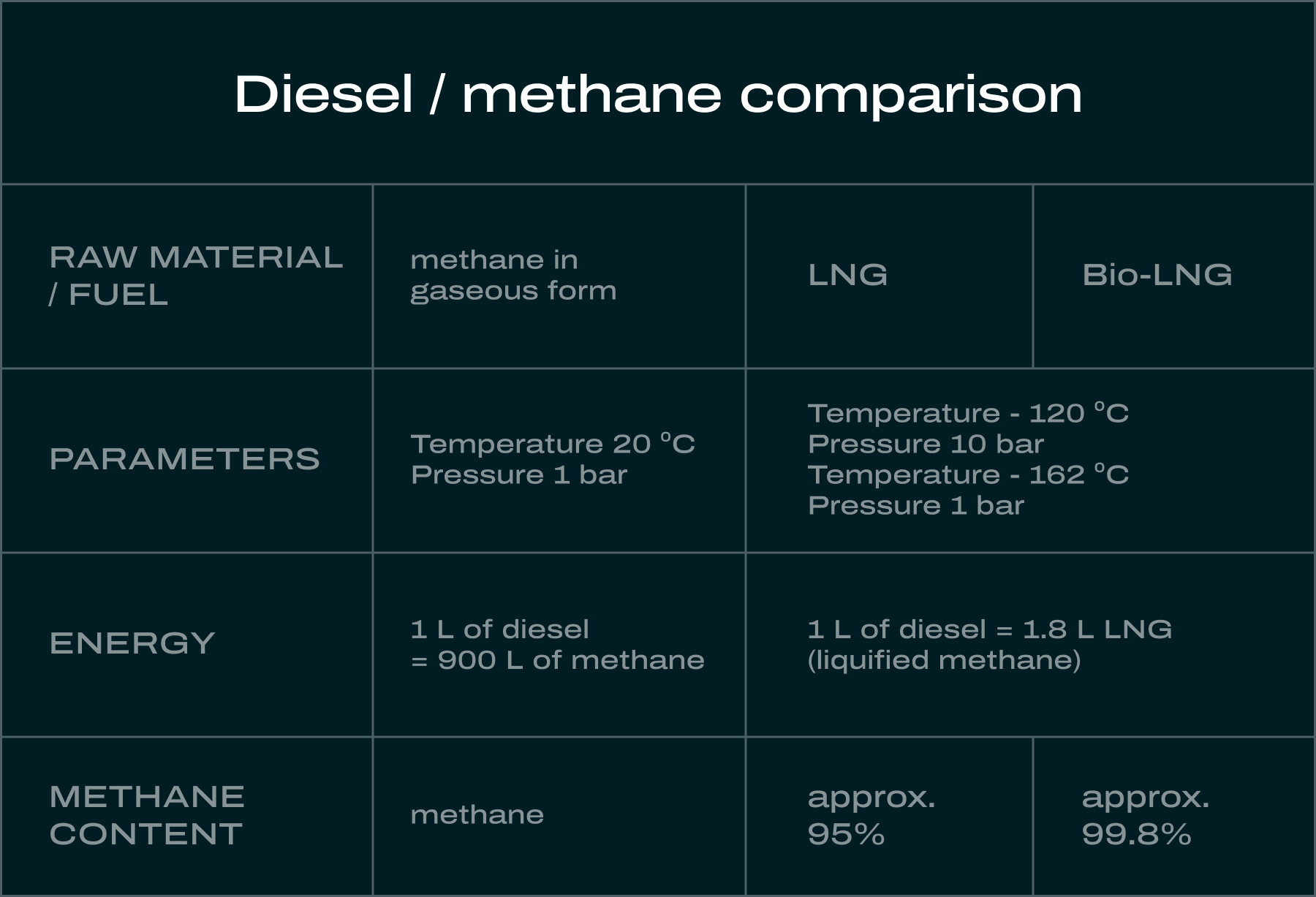

Bio-LNG, unlike standard LNG or diesel, is not a fossil fuel. Its use has a huge impact on reducing greenhouse gas (GHG) emissions, in particular CO2. Depending on the engine technology, the GHG emission reduction ranges between -10% and -20% in favor of LNG.
The use of 100% bio-LNG, especially produced from slurry, results in a negative greenhouse gas emission balance. This means that, using the WTW* calculation method, the use of a truck not only does not increase CO2 emissions, but actually reduces them. This is possible thanks to the appropriate biomethane production technology, during which CO2 is separated from methane and liquefied, and then used in industry as biogenic CO2, replacing CO2 from fossil sources.
* Well-to-Wheel – CO2e emissions from the source, including driving, include fuel production and combustion while driving.
Intermodal transport
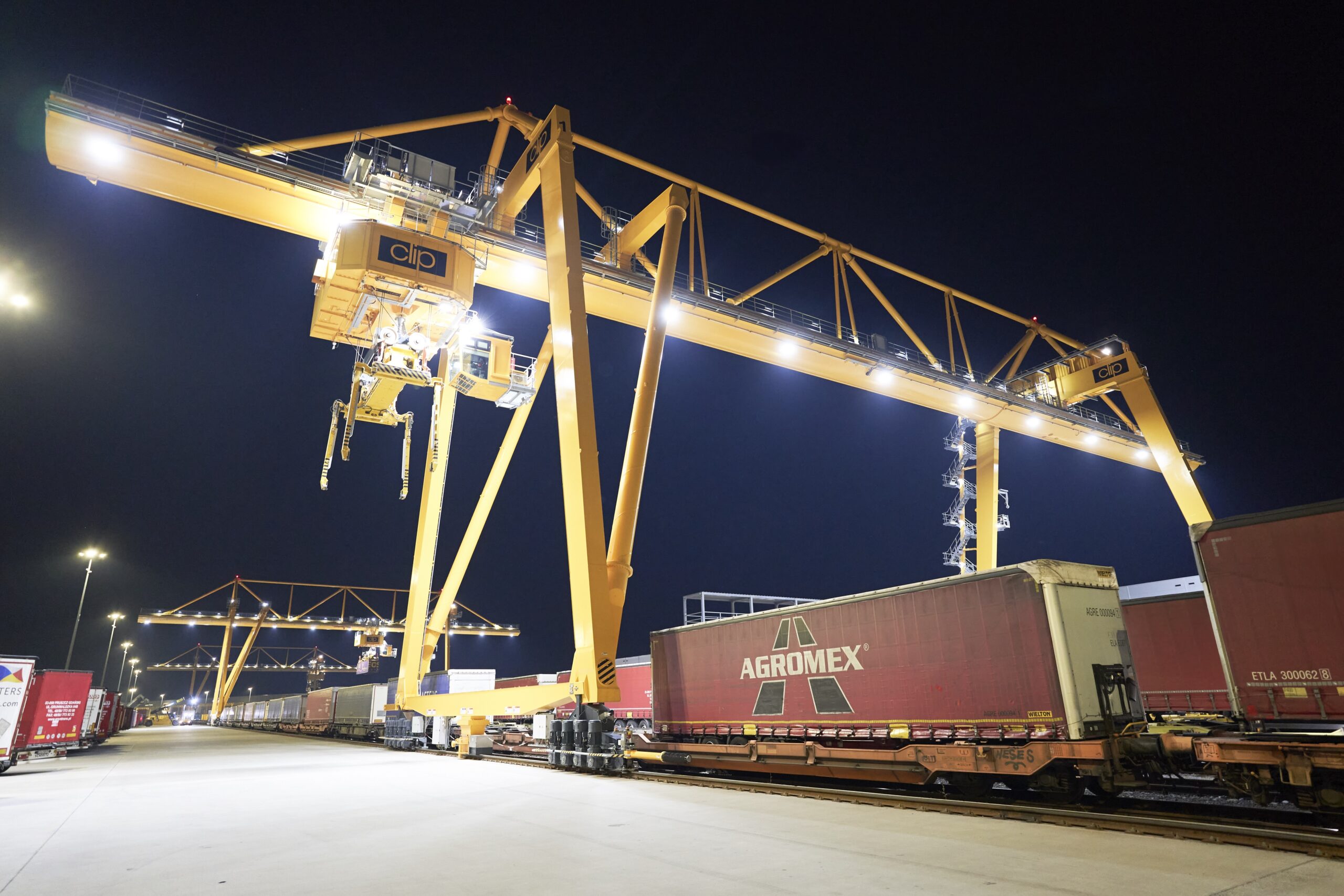
Intermodal transport
A type of transport where more than one mode of transport is used to move cargo, but the loading unit remains the same, so there is no reloading.
Intermodal road-rail transport is an environmentally friendly solution because 1 intermodal train equals approximately 40 trucks. Apart from the initial (first mile) and final (last mile) sections, the transport on the actual section is carried out by rail. According to our data, this method of transport allows for reducing CO2e emissions (TTW) by over 47% (road + rail combined, over long distances).

Agromex has a fleet of Mega curtainsider trailers (3.0 m internal height) huckepack type. These are semi-trailers adapted for transport by rail and Ro-Ro ship. They are characterized by a reinforced frame and have an air suspension that allows the semi-trailer to be lifted by a crane during loading onto a railway wagon.
Green energy for the company
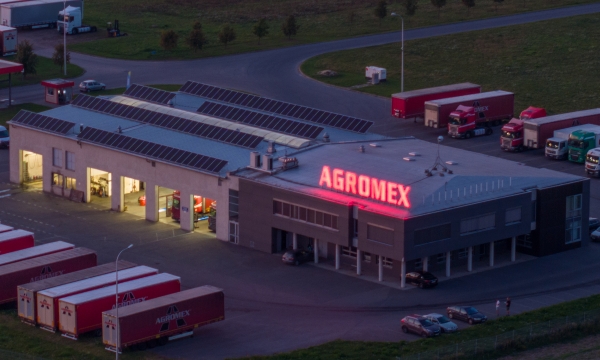
Green energy for the company
Our company is not only about transport, we also provide services for other transport companies. This is an activity that consumes large amounts of energy. In order to minimize our carbon footprint, we decided in 2019 to install photovoltaic panels, which fully cover the demand for electricity generated by the service center and the truck wash.
